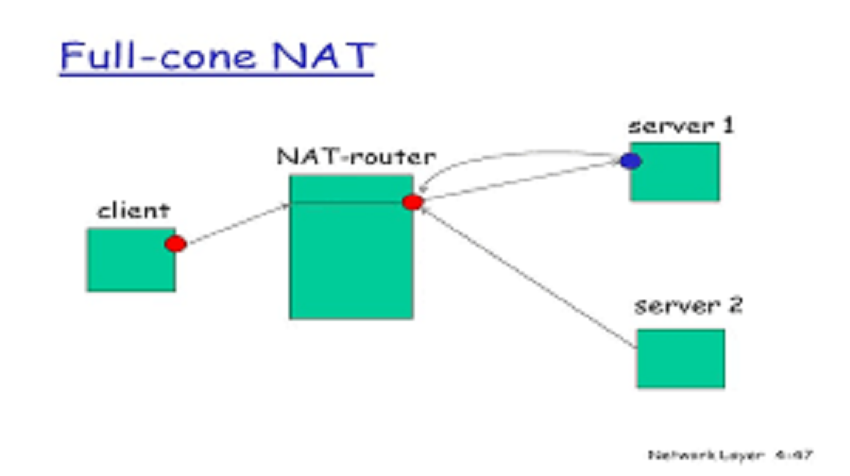
30 Aug Is Full Cone NAT Better? Explore the Ins and Outs
In the ever-evolving networking and internet connectivity landscape, the Network Address Translation (NAT) concept holds significant importance. Among its various forms, “Full Cone NAT” is a term that has garnered attention due to its potential benefits and drawbacks. Whether you’re an IT enthusiast, a curious individual, or a business owner aiming to optimize network performance, understanding the nuances of Full Cone NAT is crucial. In this article, we’ll delve into the depths of Full Cone NAT, exploring its advantages, disadvantages, and its role in modern networking. This article is organized by Techconnectmagazine.com.
Unpacking Network Address Translation (NAT)
Before we jump into the specifics of Full Cone NAT, let’s establish a clear foundation by understanding what Network Address Translation is all about. NAT is a technique used in routers to allow multiple devices within a local network to share a single public IP address for internet communication. This process enables private IP addresses to be used internally, conserving the limited pool of public IP addresses.
NAT comes in various forms, including Full Cone NAT, Port Restricted NAT, Symmetric NAT, and more. Each variant has unique characteristics that impact the network’s security, performance, and communication capabilities. For instance, when comparing full cone vs symmetric nat, Full Cone NAT provides better communication capabilities as it allows any external host to connect to an internal IP address and port, whereas Symmetric NAT restricts external communication to the same external host and port combination used to initiate the connection.
Full Cone NAT: An Overview
Full Cone NAT, often called One-to-One NAT, is one of the most straightforward NAT types. In this scenario, when an internal device initiates communication with an external server, the NAT router assigns a unique port number. This combination of internal IP address and port number is then mapped to a single public IP address and port number. Subsequently, any responses from the external server are directed back to the internal device using the assigned port.
The Advantages of Full Cone NAT
1. Simplified Configuration
Full Cone NAT offers a plug-and-play experience for users. Its straightforward approach requires minimal configuration, making it an attractive option for both individuals and small businesses.
2. Enhanced Connectivity
The one-to-one mapping of internal devices to public IP addresses ensures smooth and direct communication. This can lead to faster data transfers and reduced latency.
3. Compatibility
Full Cone NAT plays well with various applications, including online gaming, VoIP services, and video conferencing. It provides a consistent experience without requiring application-specific adjustments.
4. Security Benefits
While not as secure as some other NAT types, Full Cone NAT still offers security by not allowing unsolicited external connections to reach internal devices directly.
You may like to read: HOW TO TURN OFF SCREEN OVERLAY
The Drawbacks of Full Cone NAT
1. Limited Port Availability
Full Cone NAT uses a unique port for each internal device. In cases where many devices require simultaneous internet access, the limited pool of available ports can become a bottleneck.
2. Address Exhaustion
Using a separate public IP address for each internal device can lead to exhaustion of IP address, especially in scenarios with many devices.
3. Reduced Anonymity
Due to the one-to-one mapping, external servers can deduce the number of devices within a network. This could compromise user privacy to some extent.
Is Full Cone NAT Better?
Whether Full Cone NAT is better depends on the specific use case and requirements. It excels in scenarios where direct communication, compatibility, and simplified setup are priorities. Small businesses and individual users seeking a hassle-free networking solution can benefit from Full Cone NAT’s advantages.
However, other NAT types might be more suitable for larger networks or situations where IP address conservation is essential. It’s important to assess your network’s needs and consult with IT professionals if necessary.
Conclusion
In networking, the choice of NAT type can significantly impact connectivity, security, and performance. Full Cone NAT balances simplicity and functionality, making it a valuable choice for certain scenarios. By understanding its strengths and weaknesses, you can make informed decisions about its implementation within your network infrastructure.
FAQs
- Is Full Cone NAT the most secure NAT type?
While Full Cone NAT provides a certain level of security, other NAT types like Symmetric NAT offer higher security by regularly changing port assignments.
- Can I use Full Cone NAT for online gaming?
Full Cone NAT can work well for online gaming, ensuring direct communication between players and minimal latency.
- Does Full Cone NAT work with IPv6?
Full Cone NAT is primarily designed for IPv4. IPv6 has its own NAT traversal mechanisms.
- Can I switch from Full Cone NAT to another NAT type?
Yes, but the process might require reconfiguring your network infrastructure and devices.
- Is Full Cone NAT suitable for a business with multiple departments?
It depends on the organization’s needs. Full Cone NAT’s simplicity might be beneficial, but considerations like IP address allocation should be considered.


No Comments